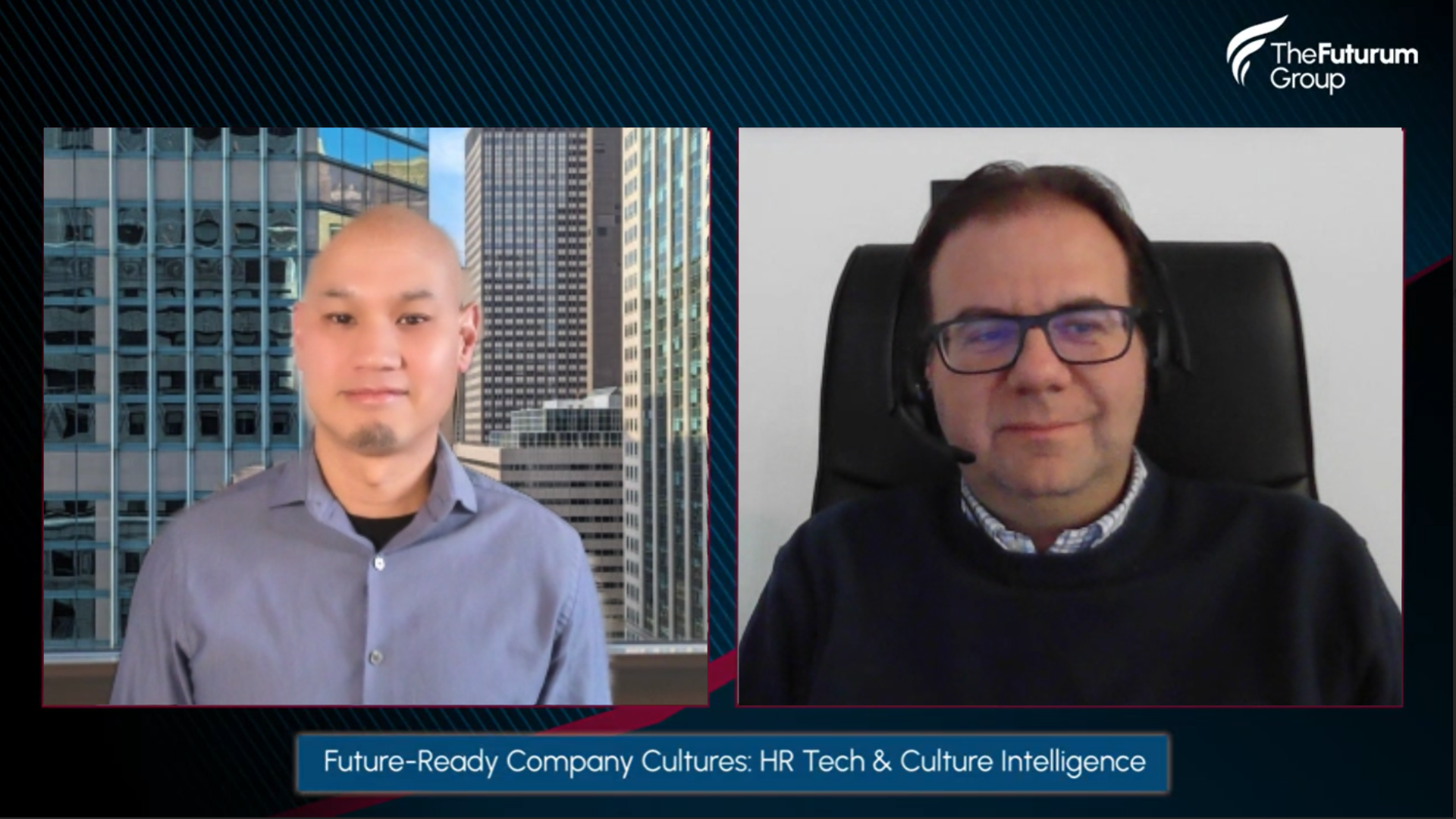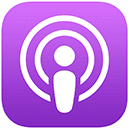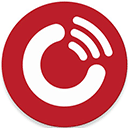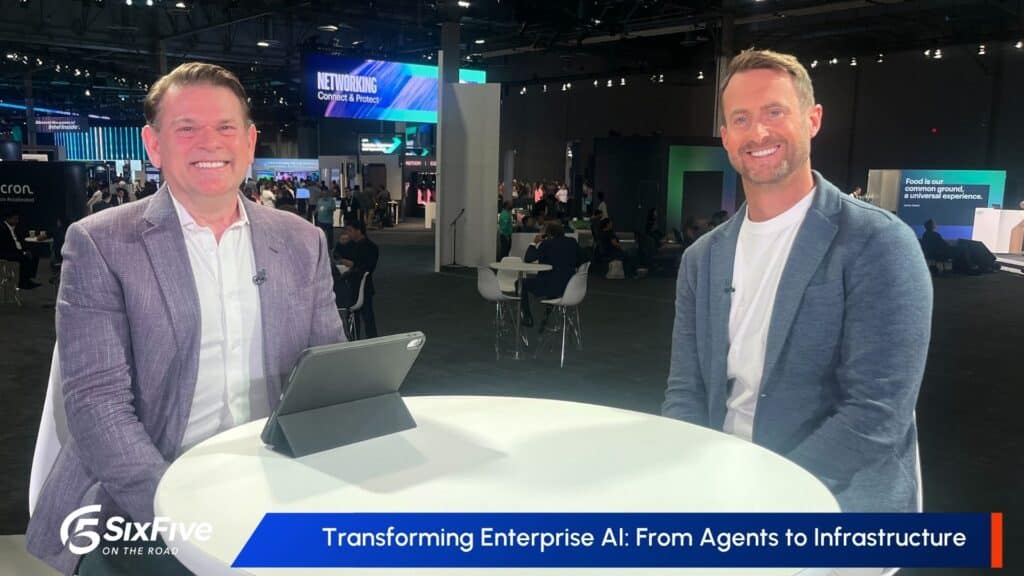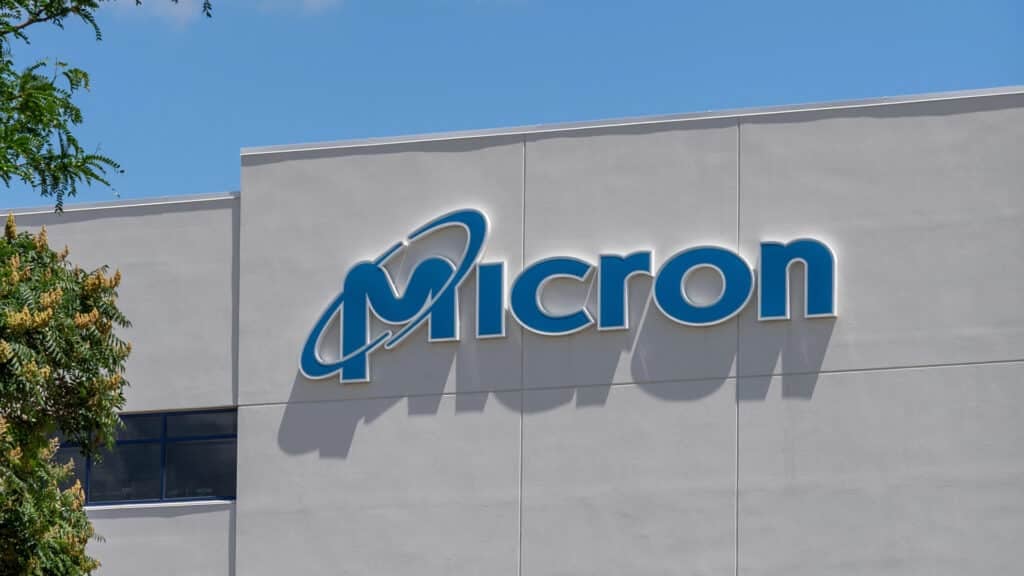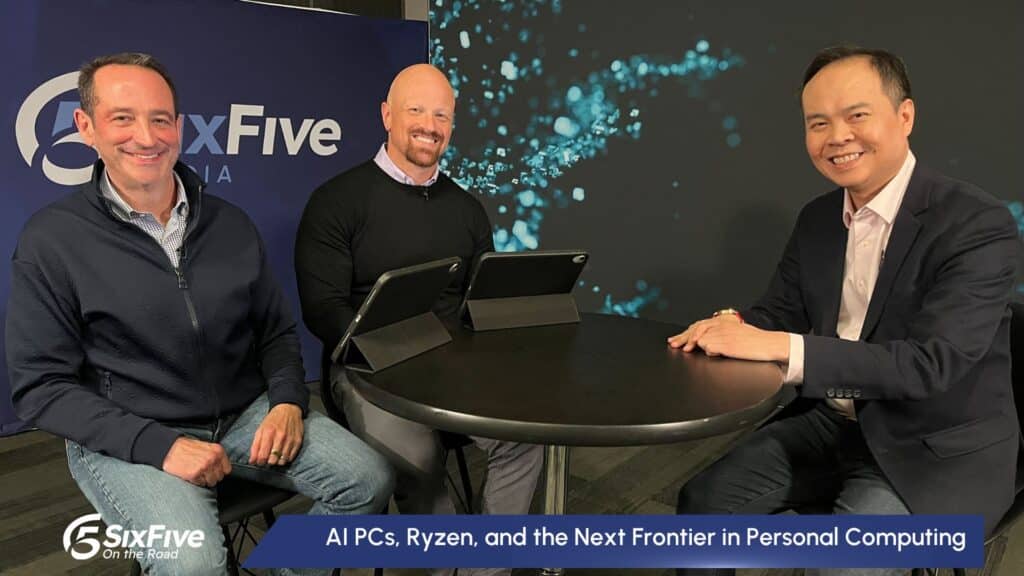In this episode of the Futurum Tech Webcast, Saso Ivanovski, CTO of Semos Cloud joins host Keith Kirkpatrick, Research Director, Enterprise Applications at The Futurum Group to discuss the technological advances in HR Tech and the evolution of employee experience. The pair also cover issues around HR tech integration, data security, and privacy, and unravel the significance of Culture Intelligence in shaping the future of HR landscapes.
To learn more about preparing your company culture and employee experience for the future, connect with Semos Cloud and see their HR Tech solutions in action.
You can watch the video below and subscribe to our YouTube channel if you’ve not yet done so.
Listen to the audio here:
Or grab the audio on your streaming platform of choice here:
Disclaimer: The Futurum Tech Webcast is for information and entertainment purposes only. Over the course of this webcast, we may talk about companies that are publicly traded, and we may even reference that fact and their equity share price, but please do not take anything that we say as a recommendation about what you should do with your investment dollars. We are not investment advisors, and we ask that you do not treat us as such.
Transcript:
Keith Kirkpatrick: Hello, and welcome back to another episode of the Futurum Tech Podcast. I’m your host, Keith Kirkpatrick, Research Director for Enterprise Applications for The Futurum Group. I’m really excited about today’s podcast, in which we will explore the technological advances in HR tech, delve into the evolution of employee experience, discuss HR tech integration, data security, and privacy, and unravel the significance of culture intelligence in shaping the future of HR landscapes.
Semos Cloud is an HR tech company innovating to reshape the world of HCM by putting people at the heart of every organization, its all-in-one employee experience platform revolutionizes the experience of hundreds of thousands of employees across the globe and their CTO, Saso Ivanovski, is here to share some HR tech and employee experience insights with us.
Saso serves as the Chief Technology Officer at Semos Cloud. His journey to the CTO role stems from a rich professional background bringing forth a range of responsibilities from aligning product vision with business strategy, to driving HR tech innovation. He’s also responsible for overseeing the software development life cycle and ensuring robust delivery beyond technical expertise. Saso is a key figure in team management, cultivating an atmosphere of innovation, mentorship, and continuous learning.
So let’s get right into it and talk a little bit about HR tech and employee experience. So, Saso, how has HR Tech evolved to enhance the overall employee experience, particularly in terms of recognition, personalization, and engagement?
Saso Ivanovski: Thank you, Keith. Our journey started back in 2015. In that period, the employee experience topic was pretty brand new. So when we were starting, many startups decided to make their way on their own, acting independently, but what we decided is to build our strategy leaning on the shoulders of the giant. In our case, that giant was SAP, the big global software company headquartered in Germany working with Enterprise companies all over the world.
Back then, SAP was just launching their brand new cloud platform and they were eager for quality cases that will fit their cloud strategy. And our solution, job points, recognition rewards platform, was a perfect fit for them. So unlike other SAP partners, we engaged not just in pure partnership with SAP, we engaged in co-innovation, and that was co-innovation with different SAP teams inside the huge SAP landscape. This resulted in all-in-one employee experience platform that we are talking about today. And of course, fast-forward 10 years later, moving to present period, we are currently leaders in providing employee recognition solutions for Enterprise clients, especially for the ones that predominantly use SAP technology, and specifically SAP SuccessFactors being one of the leading HCM solutions in the Enterprise world globally.
Today, our platform consists of integrated recognition rewards, Enterprise communication, and employee skills evaluation solutions, all under one umbrella, all under one platform. We help companies across the globe to deliver on their employee experience priorities, also to improve retention, to increase engagement, and get a greater belonging. We have entered in many Enterprise clients on all continents, so it’ll be nice to mention some of them just as an example of what we are doing and with whom we are dealing. For example, Chevron, Philips Chemicals and Hubbell in USA. Then OMV and Mapfre from Europe. Equate and Al-Futtaim from Middle East, and last but not the least, Coca-Cola, VAG Asia-Pacific, and Astellas Pharma in APJ. Of course, we are more than proud since day one, because SAP was actually not just our technology partner, but also end provider of the underlying platform where we host our application, but also our corner-store client. That means that as they like to say, they are our test driver for our solutions.
Keith Kirkpatrick: Right. That’s great. Saso, I was wondering if we could take a quick step back and have you elaborate a little more on the UX role and user-friendliness, and how that applies in terms of building HR-tech software and how that ultimately impacts system adoption.
Saso Ivanovski: Absolutely. UX has been one of our key factors for the success here. So, since we are working in the employee-experience domain, it’s natural that we need to provide a solution that is easy to use and desirable, so that’s number one where we started and this is how we are evolving even today. On top of that, we understood from the very beginning that branding of the platform, according to the client’s guidelines is a must, but not just branding, pure basic branding with the logo, and background, and everything else like our competitors do. We are going step further, and we are going into a deep branding of many more elements of the platform that really makes a difference for the end user in this corporate landscape.
So let me just name a few of the specific artifacts that are subject of very detailed branding. So we have custom clients branding on welcome binder. We are branding the entire landscape on the landing page. Of course, there are many elements like recognition, feed, activity, tiles and so on. Then we are adding more engagement with branding, so-called “eCards” which can be attached to any recognition. And then, of course, recognition certificates as an end product of the recognition flow, but also what we call a memory book, which contains all moments that matter in the lifetime of the employees. So all these elements can be specifically branded according to client needs, which really boosts the engagement of the employees and how the platform is adopted.
Now, in order for this to be possible, we introduced our own proprietary design framework, which is called Oxygen. Our dedicated team of product design experts and artists are carefully crafting each and every component of this solution, making sure that everything fits into place nicely. Now, this was one of our most important strategy decisions that we made. So, instead of using one of publicly available design frameworks, or even reuse the framework, the UX framework that was available for us in the SAP landscape, and of course it’ll be easier to reuse one of them. Instead, we have gone a mile further and we created a new UX framework from scratch.
With this approach, we were able to create a unique application UX with a design that stands out from most of the regular Enterprise corporate applications. You can imagine our satisfaction at the present moment when years and years… For years and years, our platform was voted, from SAP employees, in the top three most used applications in the SAP internal landscape. So, very important. UX is one of our key elements for success.
Keith Kirkpatrick: It certainly seems that is a key part of really engendering this sense of community within an organization. So I think that’s great. I want to switch gears a little bit here, because, of course, this is 2024, and it is impossible to have a discussion without talking about emerging technologies like generative AI and augmented reality. I was wondering if you might be able to talk a little bit about the potential integration of those technologies within HR systems and how they might actually positively impact the HR tech landscape.
Saso Ivanovski: Yes, that’s absolutely correct. So integration of generative AI and augmented reality into HR systems offers a range of benefits from, I don’t know, improved efficiency, employee experience, to enhanced strategic decision-making. As these technologies continue to evolve, they will become integral components of the HR tech ecosystem driving innovation, driving transformation across the whole HR industry.
Even today, gen-AI can streamline the recruitment process. For example, it can generate job descriptions, it can go through the process of the screening of the candidates, and even conducting, of course, in early stages still, but even conducting the initial interviews. So gen-AI tools can assist in, for example, performance reviews, can assist in analyzing employee data, provide personal feedbacks, provide development plans, and so on. So, by analyzing the employee performance data, gen-AI can also identify skill gaps and create tailored training programs, enhancing the learning experience and so on. So all these are huge benefits that never existed before, all of this was manual work from HR professionals. Now this is on the tips of our hands with gen-AI.
In this area, we really started our initial AI investment by developing our own NLP model for skills detection. Skills detection from the recognition messages, because we are in this recognition domain, and we thought, why we have so much information there stored in these recognition messages? And we noticed that the people love to emphasize the skills that recognize most with their peers. So we said, why and how we can extract that? And then based on this, we built this NLP model for skills detection.
In this case, we are always talking about unsolicited recognition. So consequently, genuine praise of the recipient skills is there, and that’s why the skills which are extracted are really, really valuable. With our skills solution, Enterprise now can identify so-called X-shaped talents based on the skills that we have been extracting various recognitions that person got from their peers or from their managers.
These people, which we are calling X-shaped talents, are possessing clusters of significant soft skills, which are recognized by their peers in their day-to-day collaboration. So easily identifying these people in, I don’t know, 100,000 employees company or 50,000 employees company can be of a huge benefit for the HR teams to position them for the further leadership positions, for the leadership mentoring, and so on. So this is how currently what we are currently offering in this gen-AI environment.
Keith Kirkpatrick: So, Saso, how is your HR tech solution leveraging artificial intelligence in 2024?
Saso Ivanovski: Great question, Keith. So obviously the AI revolution started with the public availability of these large language models starting with now everybody knows OpenAI and ChatGPT, then follow it by Llama, by Meta, and then last, but not the least, Gemini from Google. So, all this opened the space for innovation and wide adoption of AI across all software standard platforms. Suddenly copilots powered by these LLMs become a standard. In Q4 last year we launched our SEM OS copilot, which is actually the first recognition copilot on the market. It is powered by OpenAI, deployed in Enterprise Secure Make Microsoft Azure environment, opening a wide variety of benefits to the people, to the employees that are actually creating these recognition messages.
Our analysis showed that the blue-collar workers, for example, or engineers, or other tech professionals are not so creative when it comes to writing a nice recognition message. But not just them, there are people that naturally do not have a talent for expressing themselves well in writing, and this leads to a lower adoption of the platform, lower employee engagement at the end. So we thought, “What can we do here and how AI can help?” Of course, the answer was the copilot that can create meaningful and nicely designed messages, plus they can attach AI-generate images using just basic prompts describing why they want someone to recognize, and actually even to help them whom to recognize. So both aspects are covered in the pilot.
On the other hand, for the talented and creative users for whom the help of the co-pilot is not needed, we have also introduced a small AI functionality that checks the quality of the recognition message and displays the scoring to the author. Meaning that, based on the recommendations provided by our AI-scoring model, the skilled author can improve their message on their own, without the AI providing the whole message and the whole experience. So in this way, we empower the creative writers to be even better, and the ones who are not so creative to help them be more engaged on the platform.
Last but not the least, in the AI domain we are finalizing our implementation of the AI-generated survey within our communications platform where Enterprises can create surveys and share them via our platform to their employees.
Keith Kirkpatrick: Great. Now, Saso, how do your HR tech products integrate and collaborate with Enterprise systems like SAP, SuccessFactors, Oracle, and Microsoft to ensure a unified and efficient HR ecosystem, and what benefits are actually achieved through these partnerships for your clients?
Saso Ivanovski: Yes, exactly. Integrations are key in the Enterprise. You cannot have your siloed platform. When you deploy a platform, when you deploy a product in the Enterprise, it needs to have at least some level of integration. In our case, our solutions are built as extensions, integrated with standard HCM systems. Initially with SAP SuccessFactors, but not long ago. We have also a full-fledged integration with Oracle Fusion HCM. These integrations are allowing us to focus on resolving employee engagement problems, through recognitions, or communications, and yet leveraging the master HCM data which is stored in these systems. So our focus is above, in the layer above. We are using the master data from the standard systems and focusing on resolving much more complex employee engagement problems.
Furthermore, by leveraging these HCM attributes, like I can name some of them: hire date, birthdate, retirement, we can easily create various moments that matter for the employees, allowing to their peers and managers to join their celebrations. As mentioned before, we are talking here about deep integration where, by using certain data attributes from the HCM systems, we can create relatively complex recognition programs with specific workflows for approvals, with budget definitions, which are relatively complex, based on all these data attributes that we pick from the integration with the HCM system.
Now, that is one aspect of the integration, but many of our clients that are using Microsoft Teams, Microsoft Outlook, or Google Workspace have also the ability to deploy their add-ons of our application for these platforms. And in this manner, they enable the employees to sense recognition where they’re spending most of their time. So every day you’re working on your MS Teams environment, why you will need to go outside there, and then pick the URL of the recognition platform, and do the recognition there? The recognition is inside in MS Teams.
Last but not least, we have this social perspective of the integrations where we integrate with LinkedIn. With that, the employees can publish their well-deserved recognitions with one click on their LinkedIn profile.
Keith Kirkpatrick: Wow, that’s really cool because that’s, again, it sounds like what we’re talking about here is bringing recognition to the workflows where people are instead of forcing them to go out into a separate application, which is great.
Saso Ivanovski: Absolutely.
Keith Kirkpatrick: One of the things here, obviously we’re talking about Enterprise companies, data security is extremely important. I wonder if you could touch on what is it that Semos Cloud does to really ensure data security and privacy when using their HR tech?
Saso Ivanovski: Correct. So data security and privacy are key for winning the Enterprise client, and we have seen this in numerous situations, I might say, in all of our clients. So this is a recurring pattern. So with each and every one of our clients, we have gone under a detailed process of security and data privacy due diligence. Unlike in the case with UX, where you remember we created our brand new UX framework, here we have to lean on SAP BTP, or on SAP Business Technology Platform, which is actually where we deploy our solutions. And this is huge leverage for us, because we are able to count on hundreds of SAP Security Engineers who are working tirelessly around the clock to keep the platform secure.
So we just inherit those security measures, those security guidelines, those aspects that the platform where we host our application is providing for us, and it’s really beneficial. But in order to be compliant on the platform, of course, we undergo what is publicly available and known as SAP Integration Certification, meaning that each and every year SAP teams are making sure that all recommendations and measures, security measures, are implemented correctly in our solutions. So it’s annual certification, which is renewed each and every year in a rigorous process.
In parallel, we are working on our own security measures. So we have been certified with ISO 27001 and 9001, which really shows our clear commitment to maintain high security and data privacy standards, because without that, you can not even participate in the RFP, not to mention that you can win that RFP in the Enterprise world.
Keith Kirkpatrick: Right. So one of the other things that’s really interesting is obviously when we’re talking about HR today, HR departments and organizations are collecting a lot of data. I’m curious, what role does data analytics play in understanding employee engagement and performance, and how can HR leaders leverage data analytics provided by HR Tech to make better informed decisions?
Saso Ivanovski: Yes, absolutely. Analytics play a crucial role in the employee engagement, because in order to know if your employees are engaged, you need to have clear KPIs provided by the system, provided by the platform. And these KPIs are built inside our admin center where HR professionals live, so to say, and it gives them a clear picture for their employee population; how engaged they are, what they’re doing, what they’re not doing, who is doing, and who is not doing. All these questions can be nicely laid out there in the admin center in different functionalities.
So information like, who are the most unengaged employees? Who are the most unengaged employees in your department? Who are the employees who are not even logging in the platform? Who are the employees who are logging in but doing nothing? Or, who are the employees that are only redeeming their points and not giving any kudos or recognitions to other colleagues? So all of that is available in the analytics portfolio in our platform.
Then we can also have some answers about the managers. So, in these recognition programs, the companies are giving huge amounts of points, read “money”, to the managers to distribute for the employee engagement, as a recognition, and so on. And you can imagine that there are a bunch of managers that are even not using their budgets. So this information is really key. Who are those managers? Why they’re not using their budgets? What is preventing them to do so? So all of these are really key information that HR professionals can easily find out from the admin center and the specific functionalities there.
Then very popular, or very trendy, aspect is gender equality. So that’s another aspect that can be analyzed when sending the recognitions. Meaning that, what gender is sending to whom, recognitions? What is the gender equality in distributing the budgets? How the different genders communicate between each other? All of these questions can also be found with specific KPIs in the platform, but the KPIs themselves are not enough. So they’re giving you the information but not giving you what to do, how to improve them.
So on top of the informational layer, on top of the layer where we present these KPIs, there is a need for action in order to be able to improve the whole engagement. And this is the reason why we have implemented, within each KPI, one action point, or a couple of them, depending on the case. In this case, the HR managers can initiate notification emails, can send MS Teams nudges, or engage in other recommended actions in order to boost the engagement, and to include everyone on the platform, and the results have been really great. So these features have been really, really used, and really widely adopted according to different companies from the HR professionals.
Keith Kirkpatrick: It sounds like what you’re really doing there is helping organizations go from insights to actually taking action that is really going to enable overall organizational improvement. And, along with that, we’re seeing this trend of organizations increasingly emphasize the importance of people-centric strategies as opposed to just looking at the metrics, metrics, metrics. Along with that, there’s been this surge in interest into the term or culture intelligence. I was wondering how you would describe that and how can organizations use it in the best way possible?
Saso Ivanovski: It’s a pretty new term, and let’s say whole domain is opening there in the cultural intelligence segment. So employee recognition platforms can significantly enhance cultural intelligence within the organization. They can foster an inclusive environment which values diversity, cross-cultural engagement, and so on. So employee recognition platforms can really give a boost to the cultural intelligence. Our platform is designed to celebrate cultural diversity. I mentioned some KPIs even before. The platform encourages the employees to share and recognize cultural milestones. We mentioned some of them before, like anniversaries, birthdays, moments that matter, retirements, and so on. And the platform is actually providing a space to employees to recognize each other achievements. So we encourage interaction between individuals from different cultural backgrounds.
Our social features, for example, like the recognition feed where the colleagues can like, can comment, can boost those awards there. All of that is allowing for open communication, which can help break down cultural barriers and improve understanding. One of the key values that our platform brings is of course enhancing global collaboration. Why? Because most of our clients have this global presence. Most of them are all around the world, so end-to-end. With our platform, they can really help unify those employees across various locations, fostering a sense of global community. And this is actually the area where we are investing a lot. We are improving the variety of the programs that are available in the platform so we can cover as many as possible different cases for this global Enterprises.
Keith Kirkpatrick: All right, well we’ve reached the end of our time, but I’d like to thank Saso for his incredibly valuable insights, and we make sure to connect with Semos Cloud at semoscloud.com/demo to see their HR tech solutions in action. Well, thank you very much, Saso.
Saso Ivanovski: Thank you, Keith. It was a pleasure.
Keith Kirkpatrick: Great. All right, everybody hit that subscribe button and join us here for all of our episodes of the Futurum Tech Podcast and our interview series with insightful leaders from around the technology industry. Thanks very much, and we’ll see you all very soon.
Author Information
Keith Kirkpatrick is Research Director, Enterprise Software & Digital Workflows for The Futurum Group. Keith has over 25 years of experience in research, marketing, and consulting-based fields.
He has authored in-depth reports and market forecast studies covering artificial intelligence, biometrics, data analytics, robotics, high performance computing, and quantum computing, with a specific focus on the use of these technologies within large enterprise organizations and SMBs. He has also established strong working relationships with the international technology vendor community and is a frequent speaker at industry conferences and events.
In his career as a financial and technology journalist he has written for national and trade publications, including BusinessWeek, CNBC.com, Investment Dealers’ Digest, The Red Herring, The Communications of the ACM, and Mobile Computing & Communications, among others.
He is a member of the Association of Independent Information Professionals (AIIP).
Keith holds dual Bachelor of Arts degrees in Magazine Journalism and Sociology from Syracuse University.
